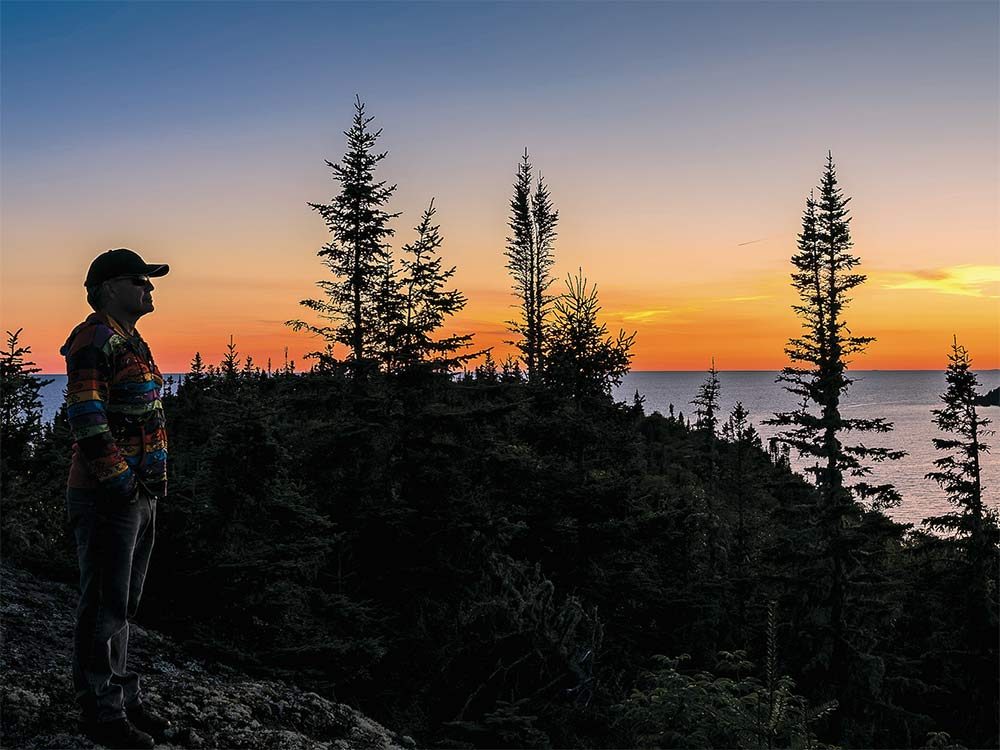
Beauty in My Own Backyard: Exploring the Slate Islands
Your bucket list need not be composed entirely of trips to faraway exotic locations with landscape views captured and repeated numerous times in countless publications.
The highlight of my bucket list was found right in my backyard and wasn’t even on my list prior to my recent trip to the Slate Islands.
Imagine, if you will, a unique adventure back in time, exploring past remnants and a way of life that literally guided the development of Canada. Lighthouses on the north coast of Lake Superior offer just such an experience. They tend to be on the outer edges of remote islands, accessible only by boat. These lighthouse locations offer unique experiences rarely found in a traditional adventure. The paths are not well travelled and meeting other visitors is uncommon. The night skies are dark, with no light pollution, offering stargazing and night photography at its best. In general, the lighthouse keeper’s houses and support buildings have weathered the years well and give a glimpse into the lives of the people who provided safe passage for the Great Lake ships.
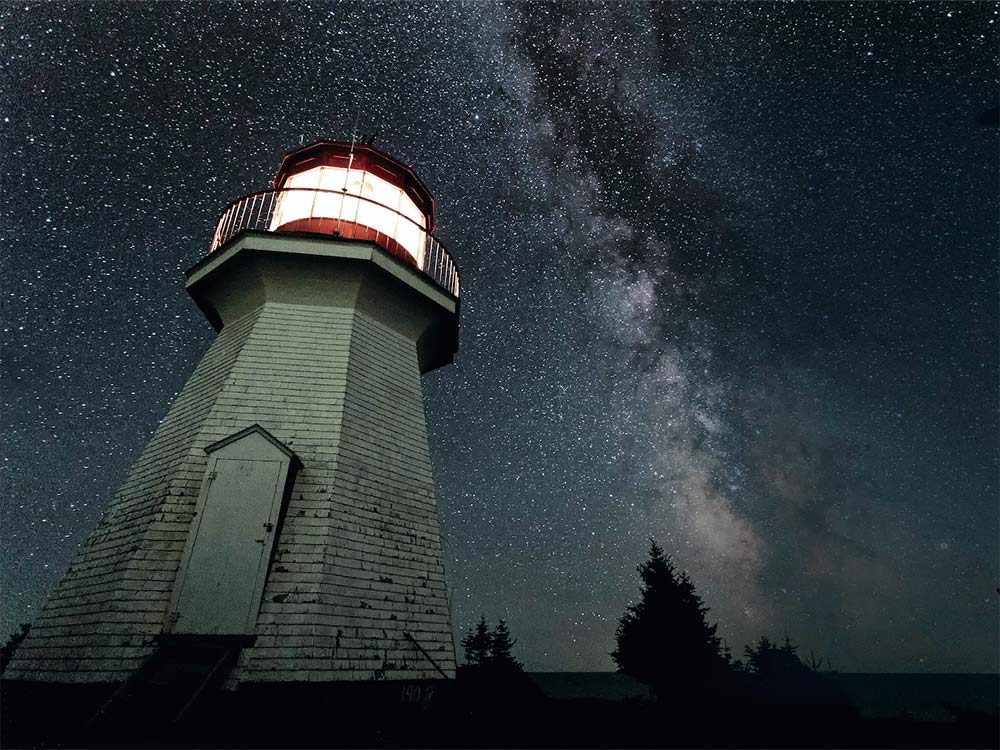
The Slate Island Lighthouse
I had set out to photograph the Slate Island Lighthouse with the Milky Way galaxy acting as the backdrop for this remnant of Canadian transportation history. The Slate Island Lighthouse is situated on an archipelago composed of two main islands, five minor islands and several islets located in northern Lake Superior 10 kilometres south of Terrace Bay, Ont. The lighthouse stands 224 feet above sea level, which makes it to the highest light on Lake Superior. The islands were cremated by a meteorite impact, which formed a 32-kilometre crater. The many islets are a kayaker’s dream with calm, clear waters and many interesting aspects to explore. The Slate Islands are also known for the herd of woodland caribou that inhabit them.
I chose a night with a new moon, which ensured dark skies and the bright stars of the Milky Way illuminating the landscape.
Joined by my brother Dean Main and friend Horst Prager, our trip began with the 12-kilometre crossing of Lake Superior to the Slate Islands, and a tour of the surrounding islands and bays. This is where my expectations began to be exceeded, and I truly felt we were in for something special.
Check out these stunning shots from a once-in-a-lifetime cross-Canada trek!
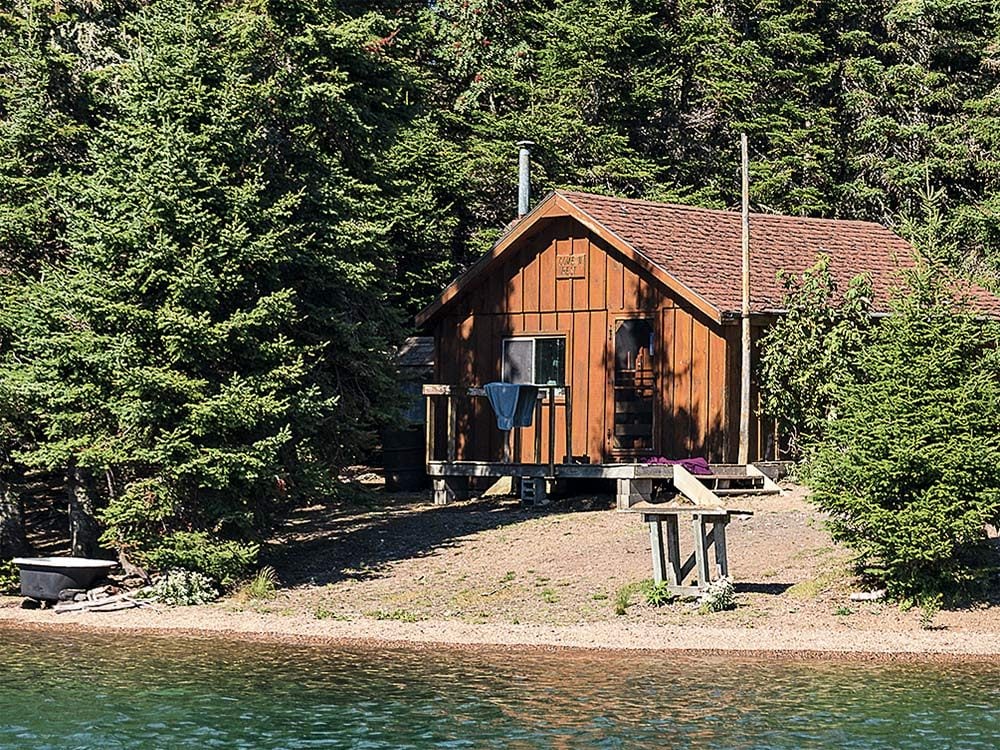
Cabin in the Woods
First, we came across a cabin in a sheltered bay and later determined it to be a “Come ’n’ Rest” cabin in the hands of the Ministry of Natural Resources. The cabin, complete with bunks, kitchen gear, table, woodstove, deck, firepit and dock, is available as a port in a storm. Unfortunately, the cabin has recently been closed to the public. Upon closer inspection of the cabin, we found a unique feature: a cast-iron bathtub located on the shore that is heated by two adjacent campfires. We didn’t fire it up, but we couldn’t help but imagine a tired paddler or fisherman enjoying a hot frontier bath while watching the sun dip behind the trees after a long day on the water.
Docking the boat and setting up for the night was our priority. However, we also anticipated meeting up with the son of the previous lighthouse keeper, Bob Bryson. What would the trip be without some lighthouse history and sharing stories of past times and challenges? Bob did not disappoint! There were many smiles, chuckles and laughter as Bob recounted his time on the island and the times spent with his dad, John Bryson, who was the lighthouse keeper for 30 years ending in 1978.
One such story was about the common occurrence of getting the mail and what that entailed. Simple but daring by any measure, the lighthouse keeper’s task was to head out in a rowboat and cross Lake Superior at the narrowest point (10 kilometres) to get to Jackfish, a ghost town now. There, he’d pick up the mail and rest up a bit before rowing back, returning later that night.
Looking for more off-the-beaten-path travel inspiration? These adventurous paddlers went on a canoe trip through the Canadian Arctic.
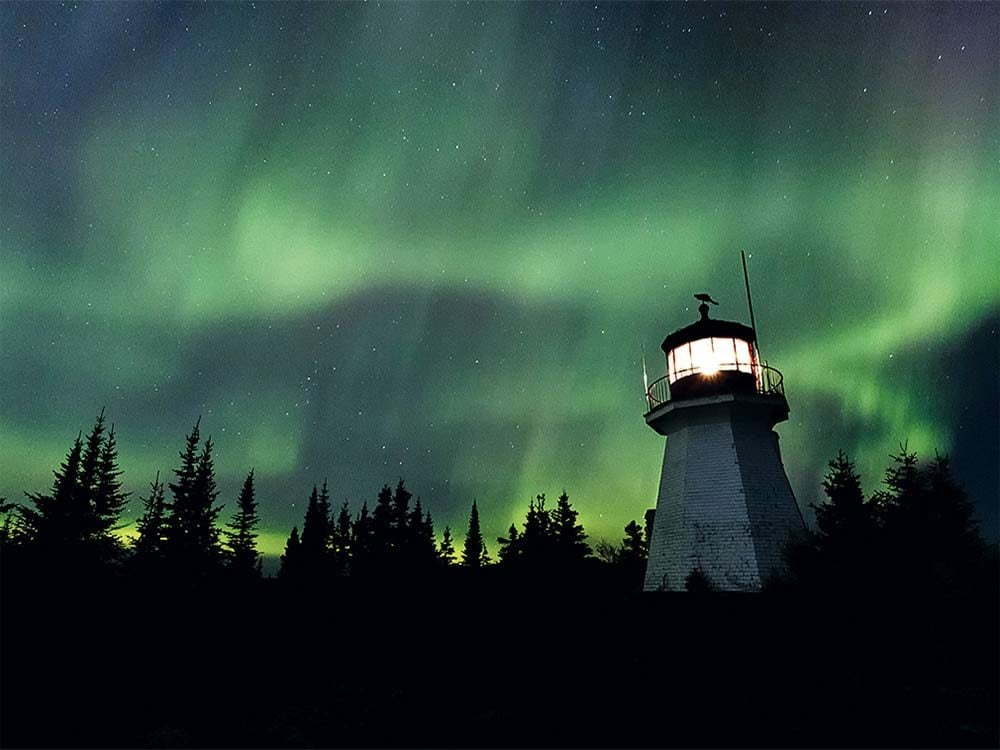
The Northern Lights, Lake Superior Style!
In contrast, we travelled in a large, modern 90-horsepower motorboat, with all the GPS bells and whistles. Nevertheless, we constantly checked the weather, as we were still apprehensive, given the unpredictable wrath of Lake Superior.
We arrived at the lighthouse around 8 p.m. to set up, take some test shots and catch the sunset. The skies, as predicted, were clear and dark. The Milky Way was expected to make an appearance around 11 p.m. The centre of the Milky Way is only visible for short periods during the summer in the Northern Hemisphere, so we settle in for a long, cool night.
By 10 p.m., the sky was dark. Looking north, I noticed a hint of green in the sky. No way, I thought! The aurora borealis (northern lights) were going to make an appearance! (Here are more of Canada’s most awe-inspiring natural wonders.) I quickly turned my camera around and rapidly set up to capture the show. I didn’t know how long or how intense the show was going to be, so the camera never stopped clicking. The show exceeded all my expectations. The lights danced for two hours above us, around us and even lit up the lighthouse. After the initial adrenaline rush of witnessing the intense green with occasional purple light, I had to manage my work. The Milky Way was visible to the south and the northern lights to the north, so I kept switching my focus back and forth, not wanting to miss anything. Witnessing the northern lights above and all around you from atop a cliff hosting a lighthouse was truly a once-in-a-lifetime experience.
Heading down east? Here’s why you should add the Magdalen Islands to your itinerary!
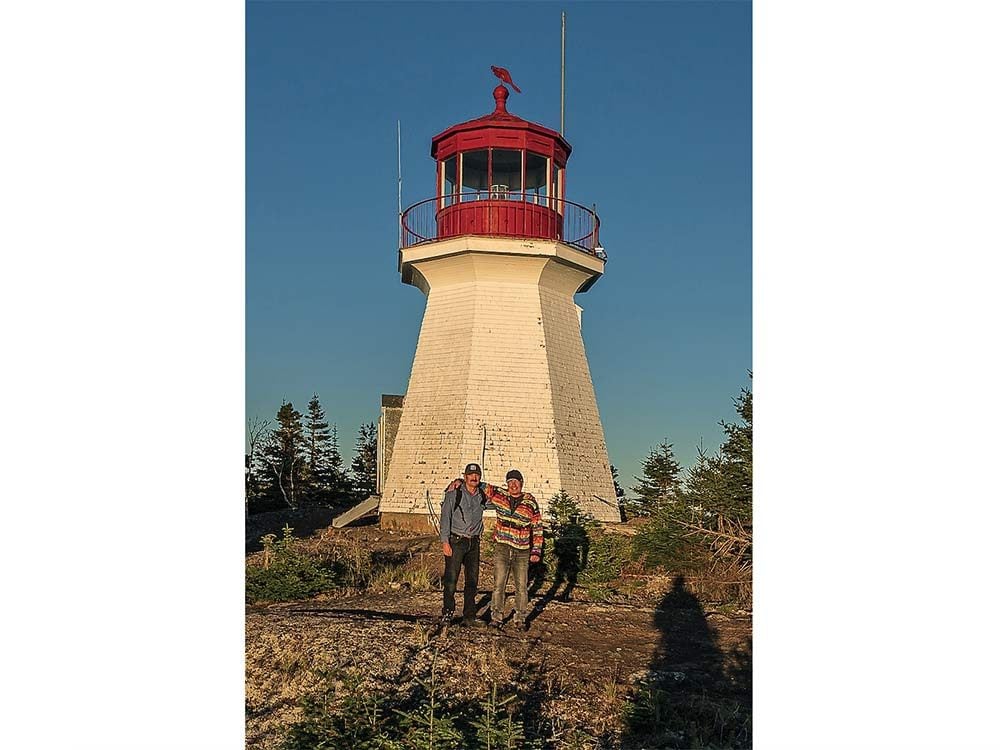
Memories of the Slate Islands
Our evening ended with us sleeping under the stars, gently rocked by waves lapping at our boat. Sleep did not come easily, given our adrenaline rush and hopeful anticipation that the aurora borealis would visit us just one more time. At last, with a cool breeze on our face and under the warmth of the sleeping bags, we drifted to sleep for a few hours.
Dewitt Jones, a National Geographic photographer, once offered this advice: Put yourself in the place of most potential and be open to the possibilities. This could not have been more true of our trip to the Slate Islands.
Automation has initiated the obsolescence of these lighthouses, and they are now in the caring hands of private groups intent on protecting them, the surrounding buildings and the history that contributed to the development of Canada.
Next, check out these mind-boggling facts about Canada!